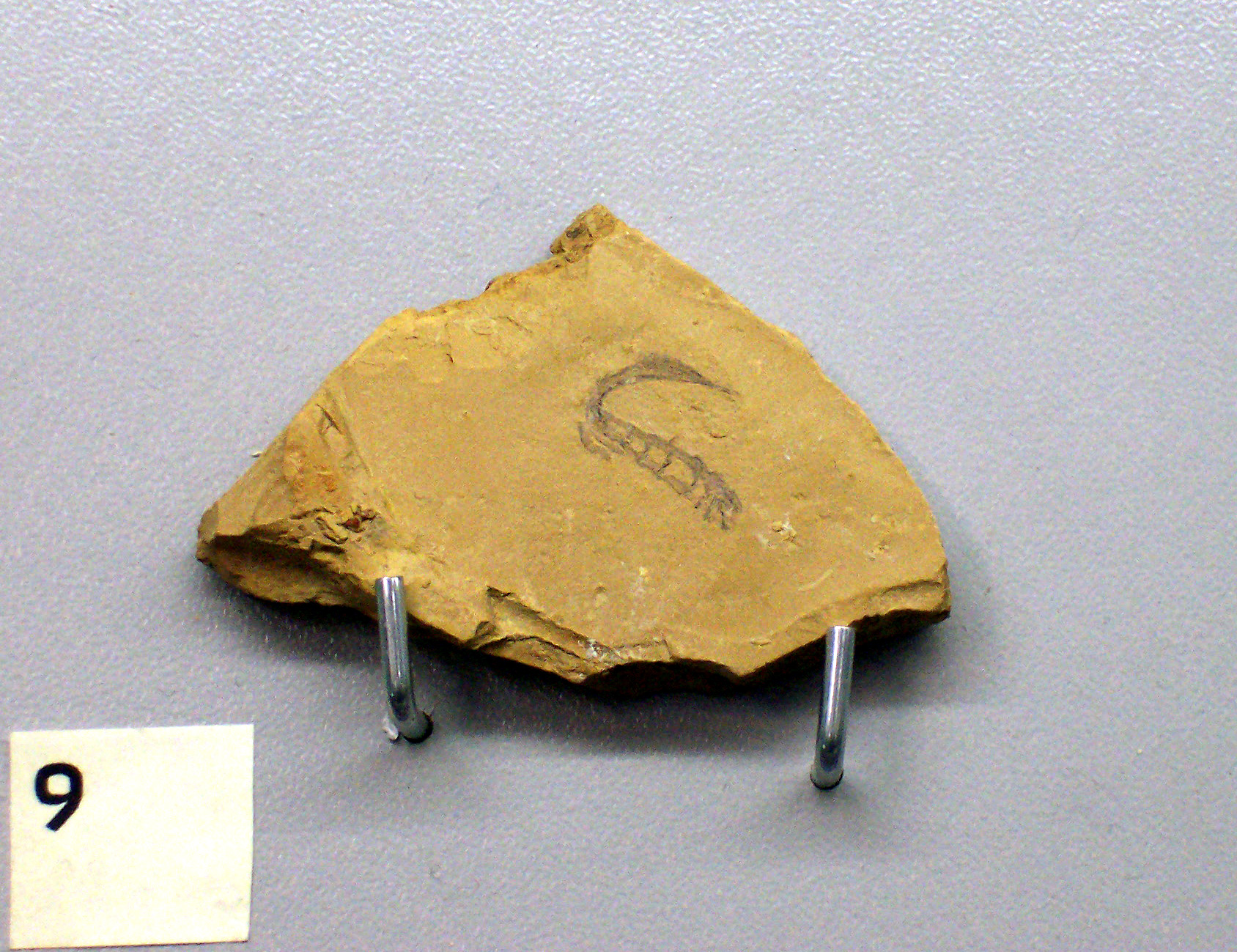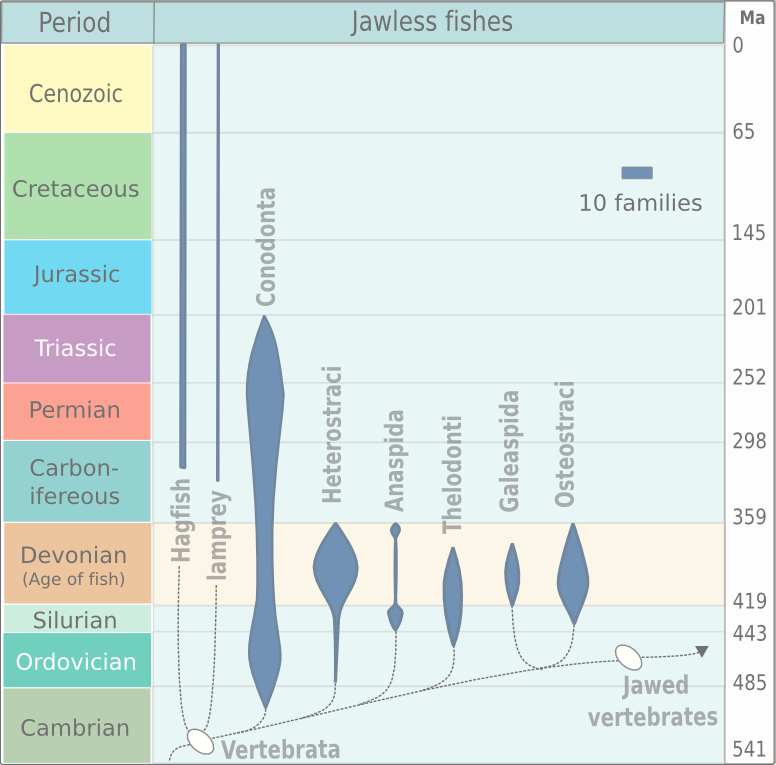|
Haikouella
''Haikouella'' is an agnathan chordate from the Lower Cambrian Maotianshan Shales of Chengjiang County in Yunnan Province, China. An analysis in 2015 placed ''Haikouella'' as a junior synonym of '' Yunnanozoon,'' another Maotianshan shale Cambrian chordate''.'' It is similar to the form ''Yunnanozoon'', which is possibly a hemichordate. Still, there are anatomical differences from ''Yunnanozoon'', including a larger stomach and smaller (0.1 mm) pharyngeal teeth. ''Haikouella'' does not have bones or a movable jaw, but it otherwise resembles vertebrates. '' Haikouichthys'' and ''Myllokunmingia'', which seem to share significant fish-like characters, have been found in the same beds. Suspected hemichordates are also known from these deposits as well as from the Middle Cambrian Burgess Shale of British Columbia. Other than possible fish scales/plates from the Upper Cambrian of Wyoming, these Chinese fish-like chordates are one of the only known pre-Ordovician craniates. '' ... [...More Info...] [...Related Items...] OR: [Wikipedia] [Google] [Baidu] |
Haikouella Lanceolata China
''Haikouella'' is an agnathan chordate from the Lower Cambrian Maotianshan Shales of Chengjiang County in Yunnan Province, China. An analysis in 2015 placed ''Haikouella'' as a junior synonym of ''Yunnanozoon,'' another Maotianshan shale Cambrian chordate''.'' It is similar to the form ''Yunnanozoon'', which is possibly a hemichordate. Still, there are anatomical differences from ''Yunnanozoon'', including a larger stomach and smaller (0.1 mm) pharyngeal teeth. ''Haikouella'' does not have bones or a movable jaw, but it otherwise resembles vertebrates. ''Haikouichthys'' and ''Myllokunmingia'', which seem to share significant fish-like characters, have been found in the same beds. Suspected hemichordates are also known from these deposits as well as from the Middle Cambrian Burgess Shale of British Columbia. Other than possible fish scales/plates from the Upper Cambrian of Wyoming, these Chinese fish-like chordates are one of the only known pre-Ordovician craniates. ''Haiko ... [...More Info...] [...Related Items...] OR: [Wikipedia] [Google] [Baidu] |
Yunnanozoon
''Yunnanozoon lividum'' (Yunnan + Greek ζῷον ''zôion'', ''lividum''; "livid animal of Yunnan") is an extinct species of possible vertebrate or chordate from the Lower Cambrian, Chengjiang biota of Yunnan province, China. It is thought of as a deuterostome suspected of being either a hemichordate or chordate. In 2022, a study reanalyzed fossils of ''Yunnanozoon'' and found it to be one of the earliest members of the vertebrate family tree. ''Yunnanozoon'' is similar to the form '' Haikouella'', which is almost certainly a chordate. Still, there are anatomical differences from ''Haikouella'', including a smaller stomach and much larger (1 mm) pharyngeal teeth. It is by no means certain whether Yunannozoon possessed features such as a heart, gills, etc., which are seen in well-preserved specimens of '' Haikouella''. ''Yunnanozoon'' somewhat resembles the Middle Cambrian '' Pikaia'' from the Burgess shale of British Columbia in Canada. Thirteen pairs of symmetri ... [...More Info...] [...Related Items...] OR: [Wikipedia] [Google] [Baidu] |
Cambrian Chordates
The Cambrian chordates are an extinct group of animals belonging to the phylum Chordata that lived during the Cambrian, between 485 and 538 million years ago. The first Cambrian chordate known is ''Pikaia gracilens'', a lancelet-like animal from the Burgess Shale in British Columbia, Canada. The discoverer, Charles Doolittle Walcott, described it as a kind of worm (annelid) in 1911, but was later realised to be a chordate. Since the discovery of other Cambrian fossils from the Burgess Shale in 1991, and from the Chengjiang biota of China in 1991, which were later found to be of chordates, several Cambrian chordates are known, with some fossils considered as putative chordates. The Cambrian chordates are characterised by the presence of segmented muscle blocks called myomeres and notochord, the two defining features of chordates. Before the full understanding of Cambrian fossils, chordates as members the most advanced phylum were believed to appear on Earth much later than the Cambr ... [...More Info...] [...Related Items...] OR: [Wikipedia] [Google] [Baidu] |
Maotianshan Shales
The Maotianshan Shales are a series of Early Cambrian deposits in the Chiungchussu Formation, famous for their '' Konservat Lagerstätten'', deposits known for the exceptional preservation of fossilized organisms or traces. The Maotianshan Shales form one of some forty Cambrian fossil locations worldwide exhibiting exquisite preservation of rarely preserved, non-mineralized soft tissue, comparable to the fossils of the Burgess Shale. They take their name from Maotianshan Hill (, Literal meaning: Hat Sky Mountain) in Chengjiang County, Yunnan Province, China. The most famous assemblage of organisms are referred to as the Chengjiang biota for the multiple scattered fossil sites in Chengjiang. The age of the Chengjiang Lagerstätte is locally termed Qiongzhusian, a stage correlated to the late Atdabanian Stage in Siberian sequences of the middle of the Early Cambrian. The shales date to ≤. The shales also contain the slightly younger Guanshan biota from Malong District in Y ... [...More Info...] [...Related Items...] OR: [Wikipedia] [Google] [Baidu] |
Cambrian Chordate
The Cambrian chordates are an extinct group of animals belonging to the phylum Chordata that lived during the Cambrian, between 485 and 538 million years ago. The first Cambrian chordate known is ''Pikaia gracilens'', a lancelet-like animal from the Burgess Shale in British Columbia, Canada. The discoverer, Charles Doolittle Walcott, described it as a kind of worm (annelid) in 1911, but was later realised to be a chordate. Since the discovery of other Cambrian fossils from the Burgess Shale in 1991, and from the Chengjiang biota of China in 1991, which were later found to be of chordates, several Cambrian chordates are known, with some fossils considered as putative chordates. The Cambrian chordates are characterised by the presence of segmented muscle blocks called myomeres and notochord, the two defining features of chordates. Before the full understanding of Cambrian fossils, chordates as members the most advanced phylum were believed to appear on Earth much later than the Cambr ... [...More Info...] [...Related Items...] OR: [Wikipedia] [Google] [Baidu] |
Chordates
A chordate () is an animal of the phylum Chordata (). All chordates possess, at some point during their larval or adult stages, five synapomorphies, or primary physical characteristics, that distinguish them from all the other taxa. These five synapomorphies include a notochord, dorsal hollow nerve cord, endostyle or thyroid, pharyngeal slits, and a post-anal tail. The name “chordate” comes from the first of these synapomorphies, the notochord, which plays a significant role in chordate structure and movement. Chordates are also bilaterally symmetric, have a coelom, possess a circulatory system, and exhibit metameric segmentation. In addition to the morphological characteristics used to define chordates, analysis of genome sequences has identified two conserved signature indels (CSIs) in their proteins: cyclophilin-like protein and mitochondrial inner membrane protease ATP23, which are exclusively shared by all vertebrates, tunicates and cephalochordates. These CSIs p ... [...More Info...] [...Related Items...] OR: [Wikipedia] [Google] [Baidu] |
Notochord
In anatomy, the notochord is a flexible rod which is similar in structure to the stiffer cartilage. If a species has a notochord at any stage of its life cycle (along with 4 other features), it is, by definition, a chordate. The notochord consists of inner, vacuolated cells covered by fibrous and elastic sheaths, lies along the anteroposterior axis (''front to back''), is usually closer to the dorsal than the ventral surface of the embryo, and is composed of cells derived from the mesoderm. The most commonly cited functions of the notochord are: as a midline tissue that provides directional signals to surrounding tissue during development, as a skeletal (structural) element, and as a vertebral precursor. In lancelets the notochord persists throughout life as the main structural support of the body. In tunicates the notochord is present only in the larval stage, being completely absent in the adult animal. In these invertebrate chordates, the notochord is not vacuolated ... [...More Info...] [...Related Items...] OR: [Wikipedia] [Google] [Baidu] |
Pharyngeal Teeth
Pharyngeal teeth are teeth in the pharyngeal arch of the throat of cyprinids, suckers, and a number of other fish species otherwise lacking teeth."Suckers ''Catostomidae''" Iowa Department of Natural Resources Many popular aquarium fish such as and loaches have these structures. Members of the genus '''' such as [...More Info...] [...Related Items...] OR: [Wikipedia] [Google] [Baidu] |
Vertebrate
Vertebrates () comprise all animal taxon, taxa within the subphylum Vertebrata () (chordates with vertebral column, backbones), including all mammals, birds, reptiles, amphibians, and fish. Vertebrates represent the overwhelming majority of the phylum Chordata, with currently about 69,963 species described. Vertebrates comprise such groups as the following: * Agnatha, jawless fish, which include hagfish and lampreys * Gnathostomata, jawed vertebrates, which include: ** Chondrichthyes, cartilaginous fish (sharks, Batoidea, rays, and Chimaeriformes, ratfish) ** Euteleostomi, bony vertebrates, which include: *** Actinopterygii, ray-fins (the majority of living Osteichthyes, bony fish) *** lobe-fins, which include: **** coelacanths and lungfish **** tetrapods (limbed vertebrates) Extant taxon, Extant vertebrates range in size from the frog species ''Paedophryne amauensis'', at as little as , to the blue whale, at up to . Vertebrates make up less than five percent of all described a ... [...More Info...] [...Related Items...] OR: [Wikipedia] [Google] [Baidu] |
Agnathan
Agnatha (, Ancient Greek 'without jaws') is an infraphylum of jawless fish in the phylum Chordata, subphylum Vertebrata, consisting of both present ( cyclostomes) and extinct (conodonts and ostracoderms) species. Among recent animals, cyclostomes are sister to all vertebrates with jaws, known as gnathostomes. Recent molecular data, both from rRNA and from mtDNA as well as embryological data, strongly supports the hypothesis that living agnathans, the cyclostomes, are monophyletic. The oldest fossil agnathans appeared in the Cambrian, and two groups still survive today: the lampreys and the hagfish, comprising about 120 species in total. Hagfish are considered members of the subphylum Vertebrata, because they secondarily lost vertebrae; before this event was inferred from molecular and developmental data, the group Craniata was created by Linnaeus (and is still sometimes used as a strictly morphological descriptor) to reference hagfish plus vertebrates. While a few scienti ... [...More Info...] [...Related Items...] OR: [Wikipedia] [Google] [Baidu] |






